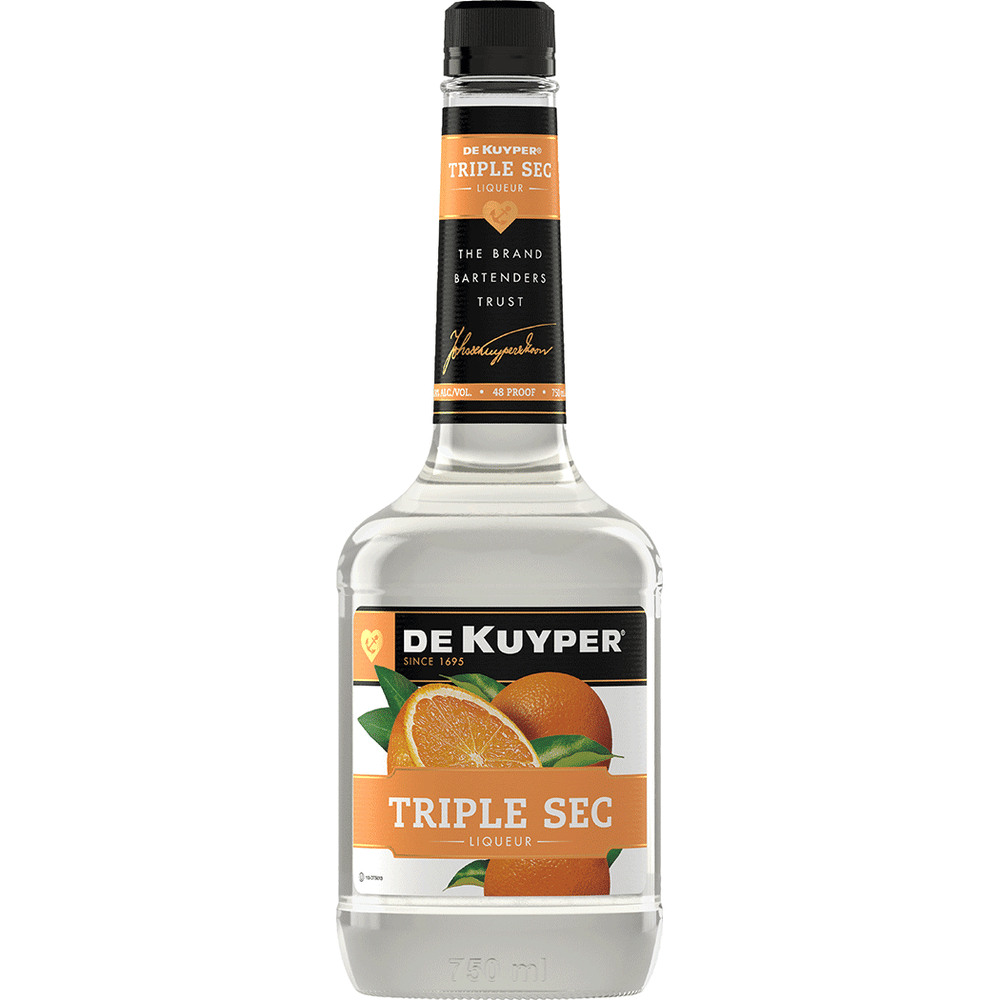A versatile addition to your at-home bar, orange liqueur adds sweetness and fruitiness to homemade concoctions and is a vital ingredient in classic cocktails like margaritas and the Sidecar. But shopping for orange liqueur can be a little confusing, as there are several different kinds.
Triple sec, Curaçao, Cointreau and Grand Marnier are all common, orange-flavored liqueurs, but they do have some differences.
“They can range in bitterness,” says Christy Bradley, spirit guide at Virgin Hotels New Orleans. “They can range in alcohol by volume. The base spirit used in distillation or aging can be different. Some are clear and some are colored. I find the viscosity is different from one style to another.”
Another difference? Triple sec and Curaçao are types of orange liqueur that can be made by many different brands, while Cointreau and Grand Marnier are proprietary blends.
Here’s an overview of the four types of orange liqueur.
Triple Sec
Triple sec originated in France and its name translates as “triple dry.” Today, many brands produce triple sec, such as DeKuyper or Leroux, so its flavor and price point can vary, explains Dennis McKinley, owner of CRU Hookah Lounge and NYAK Cognac, both of which are based in Atlanta. “Triple sec is very citrusy, almost like an orange-infused vodka. The quality ranges based on the brand.”
The alcohol by volume (abv) varies, too, ranging from 15%–40%. Triple sec, which has a clear appearance, also tends to be sweeter and syrupier than Cointreau, and, depending on what kind you buy, the orange flavor can resemble a freshly zested fruit or have an artificial taste.
Triple sec is a common ingredient in a margarita, says Bradley, “where you are trying to get the essence of orange without competing with all the other dominant flavors of that cocktail.”
Another use is a tropical sangria, using red wine, a fresh mix of fruit, triple sec, peach schnapps and orange juice, adds Luis Cubas, head bartender at Korner 67 in Miami.
Curaçao
Like triple sec, Curaçao is produced by multiple brands at many different price points, but Cubas says it’s thought to be the original orange liqueur. “Many people consider Curaçao traditional,” he adds. “It’s on the sweeter side. It almost tastes like a dried, peeled orange, portraying a bitter taste.”
The name refers to a type of bitter orange that grows on the Caribbean island of Curaçao. The oranges are inedible on their own, but their peels are used to make orange flavoring, explains Jordan Hughes, professional cocktail photographer and recipe developer at High-Proof Preacher in Portland, Oregon. “Curaçao, the liqueur, doesn’t need to be made from these specific oranges, and so most brands likely use some sort of substitute.”
As such, Curaçao (15%–40% abv) can come in many different colors, including a bright blue. Hughes says you can use the liqueur interchangeably with Cointreau or Grand Marnier. He prefers Ferrand’s Dry Curaçao in a mai tai.
Mai Tai

Combine 2 ounces aged rum, ½ ounce dry Curaçao, ¾ ounce fresh lime juice and ¾ ounce orgeat syrup and shake with ice. Strain into a rocks glass over crushed ice and garnish with fresh mint. (Courtesy Jordan Hughes, recipe developer at High-Proof Preacher, Portland, Oregon)
Cointreau
What distinguishes Cointreau from triple sec and Curaçao is that it’s a brand of orange liqueur made from a specific recipe. Founded in France in the mid-1800s, the clear liqueur is made from sweet and bitter orange peels. Hughes says Cointreau is considered a “top-shelf triple sec,” but the brand tends to avoid the term “triple sec” because it’s often associated with lower-quality products.
Cointreau has a higher alcohol content at 40% abv and is used in classic cocktails like a margarita, sidecar or Cosmopolitan. McKinley says Cointreau is his favorite orange liqueur because of its versatility, since it pairs well with clear and dark spirits and its high-quality production means it can be enjoyed neat or over ice.
“Cointreau has a crisp, smooth, orange flavor,” he says. “It tastes balanced between bitter and sweet, with warm spices that add complexity. It has a fragrant aroma and a smooth, clean finish.”
Grand Marnier
Grand Marnier, a French orange liqueur created in 1880, contains 51% Cognac and 49% orange liqueur, and has an abv of 40%. Cubas says Grand Marnier has a “punchy, sweet orange flavor with a spicy finish.”
The brand describes its flavor as “bitter orange, balanced by Cognac notes of hazelnuts and toffee,” and the liqueur’s color as “amber and topaz.”
“Grand Marnier, being Cognac-based, offers the most distinguishing differences for me,” says Bradley. “It’s a little sweeter than the others and more viscous. It can deliver a warming sensation upon consumption which makes it stand out.”
Cubas says it’s his favorite of the orange-flavored spirits, and he likes to drink it by itself as a digestif or use it in a Grand Mimosa, which he makes by mixing fresh orange juice, Prosecco and Grand Marnier. Hughes adds that Grand Marnier can be used similarly to Cointreau, and he likes to pair it with darker, aged spirits such as in a riff on a Manhattan.
Employee’s Only Manhattan

Combine 1 ½ ounces rye whiskey, 1 ¾ ounces sweet vermouth, ½ ounce Grand Marnier and 3 dashes aromatic bitters in a chilled coupe glass. Garnish with a lemon twist. (Courtesy Jordan Hughes, recipe developer at High-Proof Preacher, Portland, Oregon)
"triple" - Google News
February 10, 2022 at 06:52PM
https://ift.tt/XFdvnw8
Orange Liqueur, Explained | Wine Enthusiast - Wine Enthusiast Magazine Online
"triple" - Google News
https://ift.tt/hYAqZuV
https://ift.tt/ONfjwSC
Bagikan Berita Ini


















0 Response to "Orange Liqueur, Explained | Wine Enthusiast - Wine Enthusiast Magazine Online"
Post a Comment